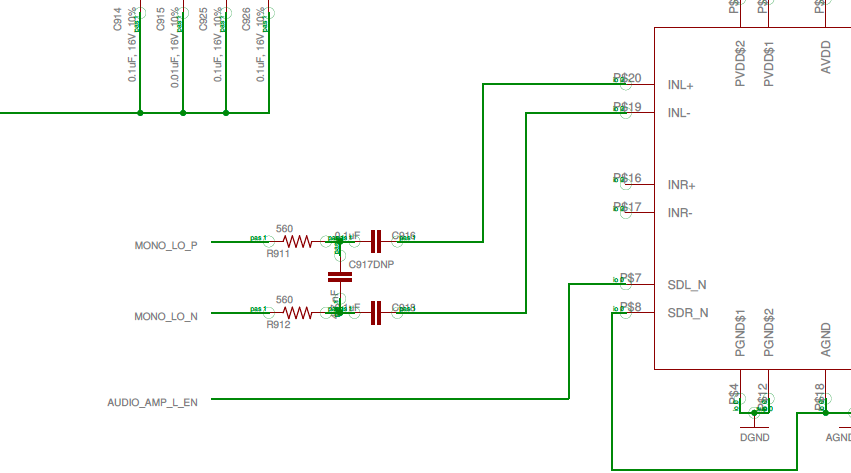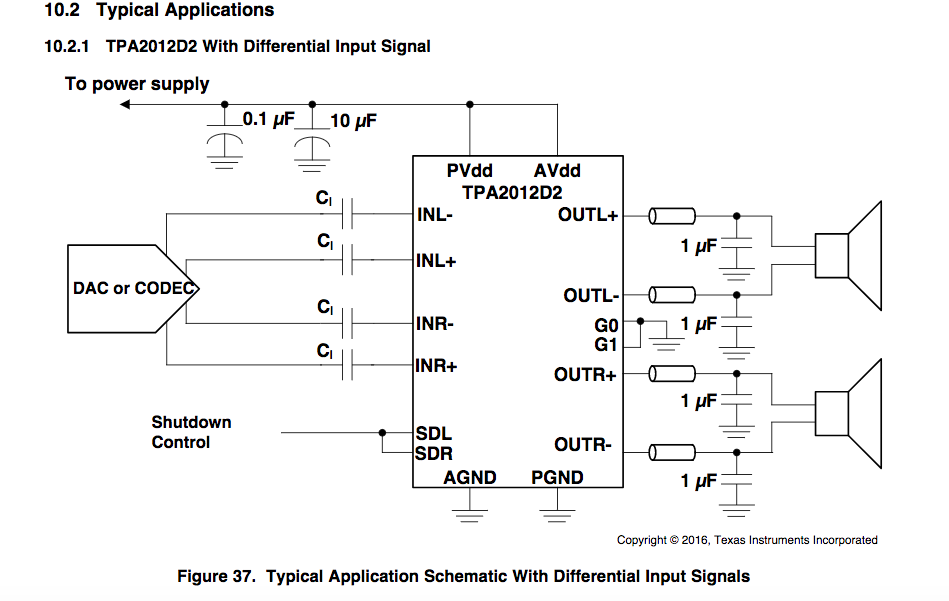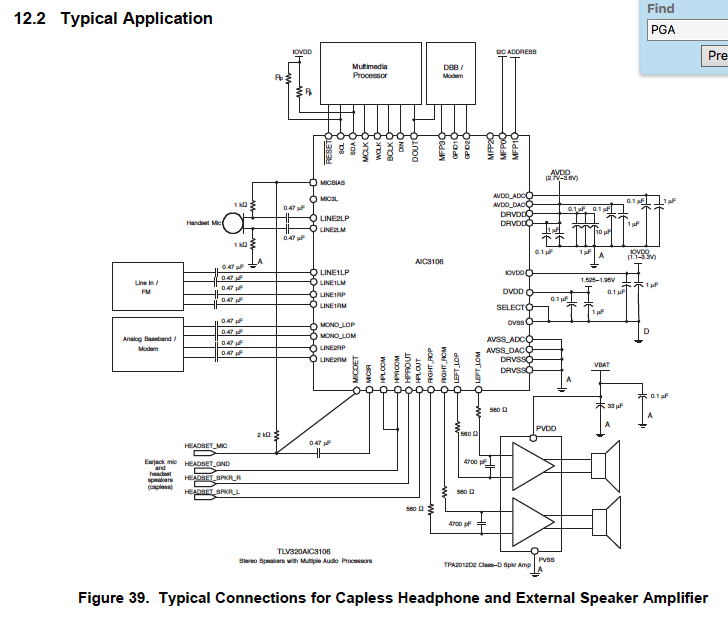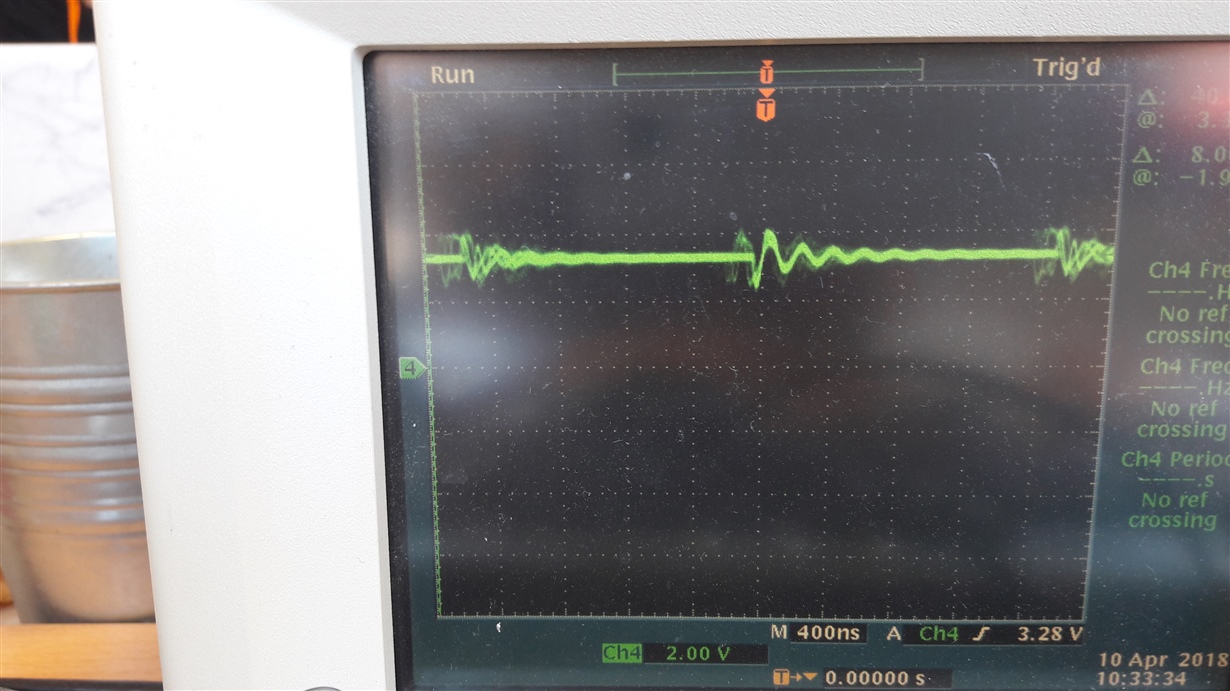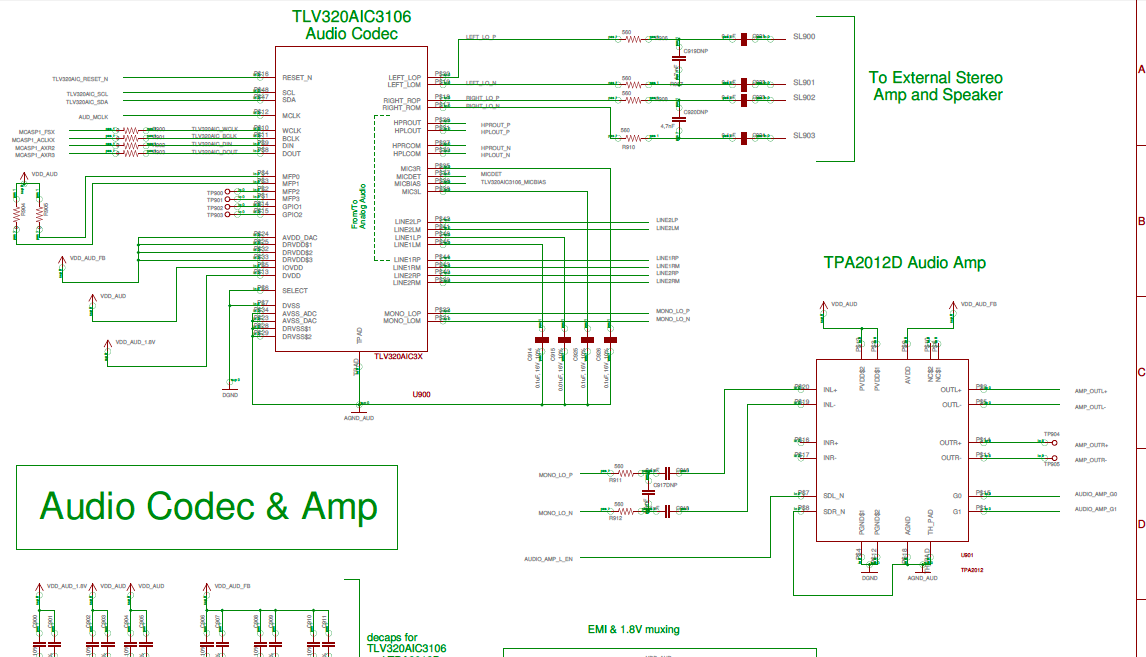Other Parts Discussed in Thread: TLV320AIC3106
Hello,
We have an audio configuration where we use TLV320AIC3106 as the Audio Codec, which is driving the TPA2012D2 Class D amplifier.
We are routing the MONO_LOP/M differential lines to the left input of the TPA2012D2.
You will find below the schematic part of the design.
This design was made according to information coming from both tpa2012d2 spec and tlv320aic3106 spec.
1) The differential output of the TLV320AIC3106 drives the amp through 0.1uF serial caps (input capacitors), as suggested in the TPA2012D2 spec, section "10.2.1TPA2012D2 With Differential Input Signal"
2) The thing is, the TLV320AIC3106 suggests another circuit, as shown below (taken from TLV320AIC3106 spec) with serial resistors and a 4.7nF cap between differential lines
3) We measure following "noise" on the audio lines:
Which is then foud on our codec power supply: this is our analog 3.3V supply:
Could you please help us solve this "issue" ? How should we connect our codec and amp ? Through serial resistors and a 4.nF cap and input capacitors ?
Thanks for your help


